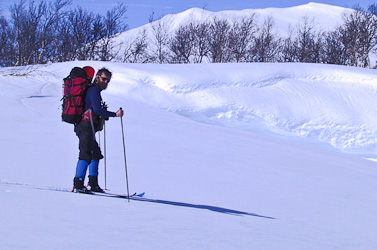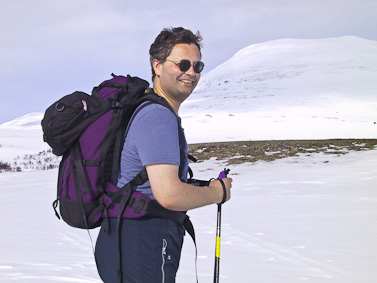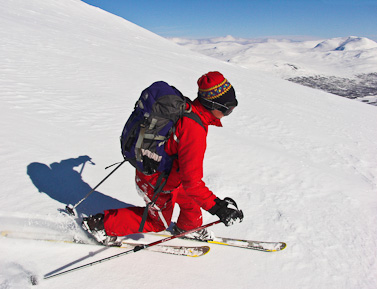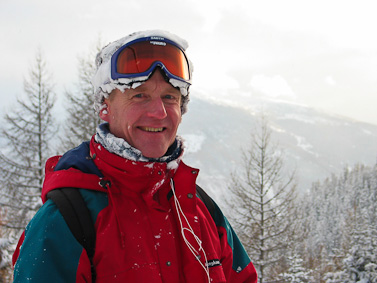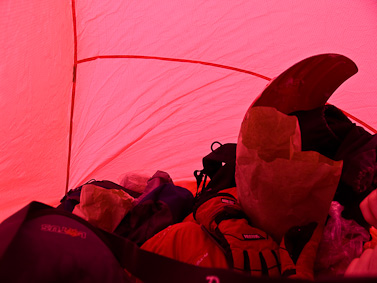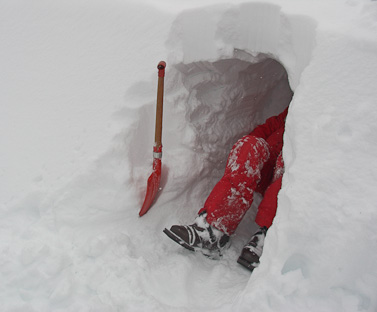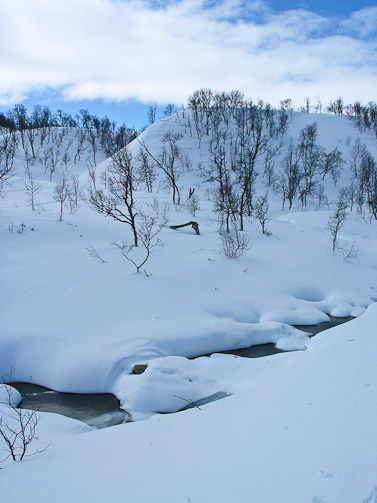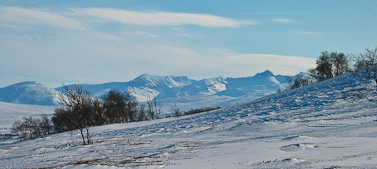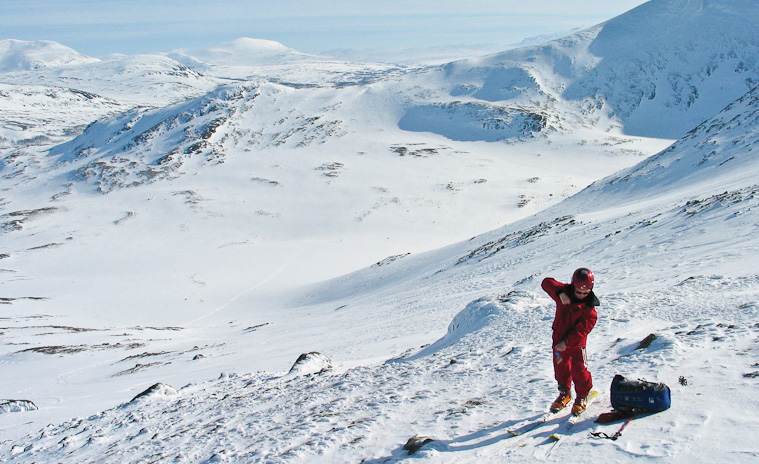What clothing will I need?
You need a wind- and waterproof layer outermost, such as a GoreTex jacket and trousers (protecting your legs is as important as your torso). Next to the skin wear ski underwear (vest and long johns), which keeps you warm and wicks sweat away from your skin. A layer of synthetic fleece (or wool) in between is perfect to keep you warm. Thick socks, woolly hat, and gloves complete the outfit.Many people are surprised at how hot they get on a ski tour. You will be exercising after all, whether you walk gently in the valleys or climb up the mountains. It is important to be able to adjust your clothing and vent heat and perspiration-if your clothes become soggy with sweat then they will not keep you warm.
Bring an extra warm top with you-a second fleece or a down jacket. This is to put on whenever you stop to rest, to keep you warm while you are not exercising.
Avoid cotton at any price: it is a sweat magnet and will be soaking by the end of the day.
What equipment will I need?
You need basic ski equipment: skis, boots, and poles. If you plan to stay in the valleys or around the mountain station, then light Nordic tour skis would be most suitable. If you plan to ski up and down the mountains, then you will do better with telemark or randonnée (alpine touring) skis, and climbing skins. Telemark equipment-in which the heel of the ski boot is not fixed to the ski-is popular for skiing these mountains, as it is comfortable to use on flat trails as well as slopes. Randonnée equipment has the advantage of greater stability, and familiarity to the alpine skier. Telemark skiers usually use the "telemark turn" to descend steeper slopes, a technique which cannot be used with conventional alpine skis, and so is unfamiliar even to expert skiers. Why not try it? The worst that can happen is that you fall over!You will need a rucksack to carry extra clothing, food, and equipment with you. Around 50 litres is a suitable size for day tours. Ideally it should fit snugly against your back, so it doesn't wobble in the turns.
Bring a steel thermos to carry a hot drink with you. Carrying a hot drink is important, in part, for safety. Carry a folding insulating cushion to sit on during rests.
Some say you can safely follow marked trails in this area without carrying a map and compass. Personally, I wouldn't dream of it.
If the weather is windy, you will need a pair of ski goggles to protect your eyes. In strong sunshine, you will need a pair of sunglasses to prevent snow blindness. Carry both as insurance.
What about safety?
The main risk at Storulvån is a sudden change in the weather, making it difficult or impossible to return to the mountain station. A windsack is a kind of miniature tent in which 2-3 people can take shelter, either just to take a rest in comfort, or to shelter from a storm. A snow spade is used to dig an emergency storm shelter-or just to make a sofa in the sun in a snowdrift. Both items are essential safety equipment, but it is enough to carry one windsack and one spade per 2-3 people.There are avalanche slopes in the vicinity, but they are not so many and they are not hard to avoid; avalanche accidents are rare here. Discuss your plans with the station staff, and avoid skiing directly below steep snowy slopes.
What can I rent at Storulvån?
You can rent ski equipment (skis, boots, poles, skins), rucksacks, and safety equipment (windsacks, spades) from the mountain station, but not goggles. Book your equipment in advance, the available stock is limited! To books skis and boots, you will need to know your shoe size and your height in cm. You cannot rent clothes, so you will need to bring suitable clothing with you.There is also a small shop which has in the past stocked items such as gloves and sunglasses for those who forgot to bring any.
I can't ski!
Storulvån is the perfect place to learn. There are very scenic tours of only a few km from the mountain station, over largely flat ground. These tours closely resemble going for a walk in the snow, except that it's a little less work because you get to glide a little with each step. Try it-it's great fun!That said, no route is perfectly flat, so expect a few short, gentle descents. A little practice at a local ski slope (even a dry slope) just to learn the basics of gliding, braking and turning will pay dividends on these. The worst that can happen is that you fall over... and snow is soft.
If you really don't want to try it, you can admire the scenery from the mountain station lounges, or maybe bring a rental car and use the time for a scenic drive?
Can't I just walk instead?
Well, no. Walking in deep snow is very difficult and strenuous, because your feet sink deep down into it, and every step becomes like stepping over a fence. Moreover, snow quickly gets into your boots and trousers and makes you cold and wet. One of the primary purposes of a ski is to spread your weight over the surface of the snow, so that you don't sink down in. Why do without that?There is an alternative, if you really want to walk. You can rent snowshoes from the mountain station, which spread your weight so you can walk in the snow, but do not glide. They're harder work to use and slower than skis, because-well-they don't glide. But they are an alternative that requires no skill.
Will I break
a leg?
Come on, you have to be good
to do that!Seriously, unless you deliberately go up the mountains, then you will never get up enough speed to break anything, because the ground is flat!
